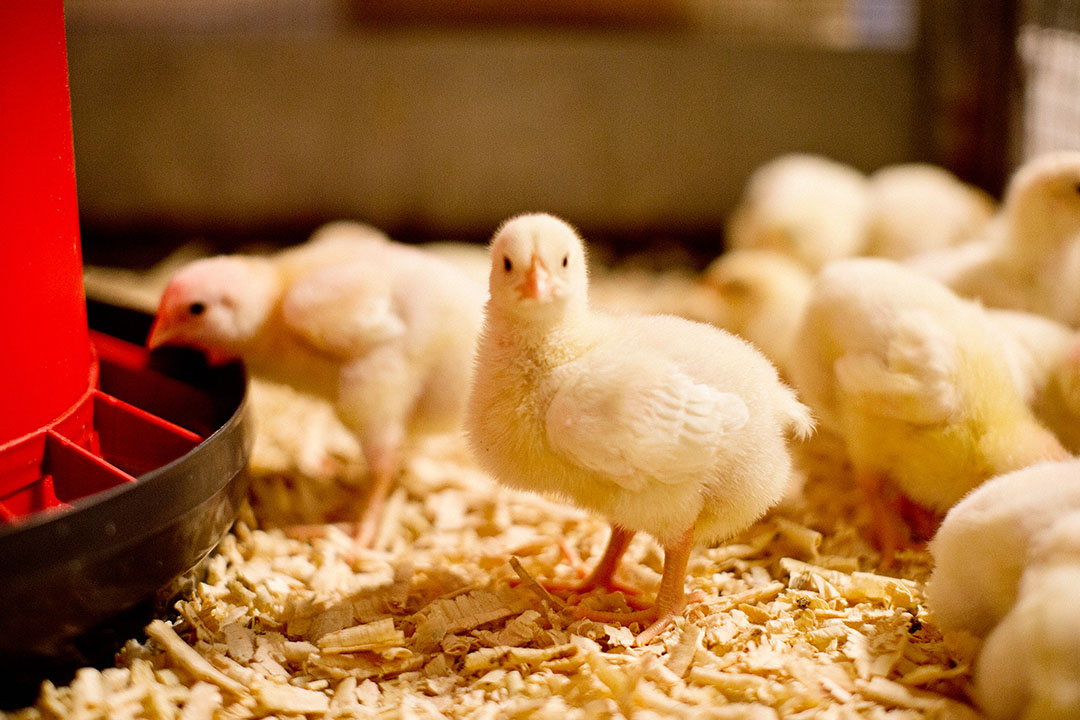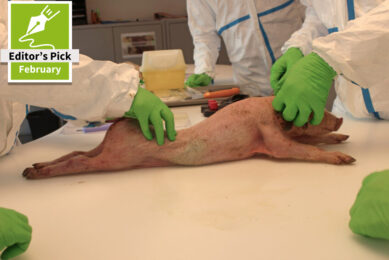Nutribiosis is key in post-AGP gut health

With the global regulation of antibiotic growth promoters expected to accelerate, what action can animal producers take to correct associated performance losses? Dr Milan Hruby, global applications senior manager at DuPont Animal Nutrition, explains how taking a wider view offers a potential solution to this complex issue.
The move to restrict or remove antibiotic growth promoters (AGPs) in feed is one of the most challenging issues to hit the animal industry in recent years. Now, as global health bodies step up efforts to fight the threat of antimicrobial resistance in humans, the use of antibiotics in the food chain is coming under ever greater scrutiny.
It goes without saying that reducing or removing antibiotics from the farm is not an easy task. Taking away this long-established practice has serious implications for producers in terms of the health of their livestock and business. Most importantly, the daily challenge of providing optimal animal performance is severely compromised due to the depletion of available tools to fight against unpredictable diseases, such as necrotic enteritis (NE). According to recent research, such challenges are reportedly on the rise and believed to be contributing to high economic losses.
In considering alternatives to conventional antibiotics, there is no ‘one size fits all’ replacement. There are too many variables to consider such as farm management, national legislation and feed ingredient availability, to name a few. In addition, the use of antibiotics itself is a complex process. Although they are known to suppress sensitive populations of bacteria in the intestines, it is also recognised that they do not discriminate between beneficial and non-beneficial types. Viewed in this context, continuing to look solely at nutrition as a stand-alone solution, without also considering the implications of the fields of microbiome and gut and immune function, is no longer an option. Animal performance is always an interaction of three pillars (nutrition, microbiome and gut and immune function) within the gut – a state we refer to as nutribiosis. The aim is to understand how to positively influence all three pillars to achieve balance in the gastrointestinal tract (GIT) – also known as a ‘favourable nutribiotic state’ – and so deliver the sought-after positive performance benefits in the animal.
Challenges to the nutribiotic state
The removal of antibiotics from feed will naturally challenge the delicate nutribiotic balance, but their use does not allow for a ‘favourable state’ in the first place. Under challenge the three pillars can become unbalanced and it is this lack of harmony that creates an ‘unfavourable state’ in the gut; leading to reduced health and performance. This is why taking a holistic approach is vital. It helps to build a deeper understanding of these interconnected relationships and opens up new opportunities to improve overall production.
Nutritional challenges
Nutritionally, one of the greatest challenges to animal performance is high levels of undigested nutrients. While 100% digestibility can never be achieved, reducing levels as far as possible is a key goal for nutritionists and producers alike. This is partly because undigested feed reaching the terminal ileum provides ideal substrates for non-beneficial bacteria to feed on and thrive – and when the beneficial bacteria becomes outnumbered, it can lead to subclinical diseases, inflammation and gut damage. One opportunity that warrants further investigation is the use of feed enzymes to further remove undigested substrates. One study looking at the impact of xylanase, amylase and protease enzymes on levels of three undigested nutrients (protein, starch and fat) found that this intervention had a positive effect on all three nutrients. Levels of undigested starch, for example, dropped by 43%. Further research is helping to build on this knowledge; not just in terms of the types of feed or substrate needed for the microbes to work on, but also how to increase the production of short-chain fatty acids and potentially benefit the gut cell or gut microbiome through changes of substrate such as arabino-xylooligosaccharides or AXOS production.
Non-nutritional challenges
It is also important to understand the impact of non-nutritional challenges on the nutribiotic state. DuPont has carried out a number of studies with NE-challenged birds which, unsurprisingly, demonstrate a significant reduction in performance. A recent study estimates that an immune response can account for 25% of total body weight reduction during a challenge (see Figure 1). A promising way to address these types of non-nutritional challenges is with probiotics. What is interesting from a nutribiosis perspective is that, with studies demonstrating a positive influence on both microflora and gut health, these helpful bacteria can be seen to work constructively on all three pillars within the GIT. The next step is to demonstrate probiotic value within an antibiotic-free narrative.
Figure 1 – 25% of total performance drop during challenge can be attributed to the immune response of the animal.

Multi-pronged approach
While enzymes and probiotics undoubtedly offer benefits individually, one of the most exciting areas to explore is what happens when they are used together. Our data points to a clear opportunity to make considerable gains. Specific enzyme and probiotic combinations have been shown to improve key aspects of gut health including digestibility of key nutrients in broiler diets and enhanced intestinal integrity. Research also suggests this intervention contributes to a significant reduction in inflammation. IL-6 is a key pro-inflammatory cytokine which initiates the acute phase protein response and induces fever, see Figure 2. This cytokine is typically elevated during times of physiological stress.
Figure 2 – Ileal IL-6 (day 21).

There are other issues to consider which are subject to further research. Improving the water holding capacity of intestinal cells, with the use of organic osmolytes like betaine, may improve the nutribiotic state. Phytogenics could also be part of an integrated approach. Equally important is effective facilities management; housing, vaccination, education should all play a part in efforts to rectify any performance losses brought about by the reduction in antibiotics. So as the industry evolves towards antibiotic-free production, the understanding of nutribiosis offers a new platform to explore additional opportunities; providing valuable insights for improved animal performance, welfare and gut health – ultimately helping producers make decisions for commercial success.
References available on request
Author: Dr Milan Hruby, Global Applications Senior Manager, DuPont Animal Nutrition











